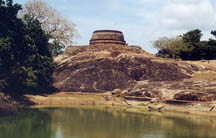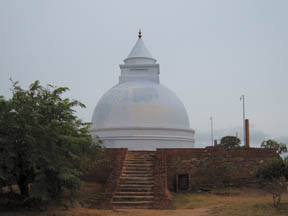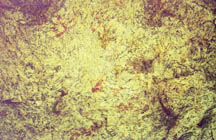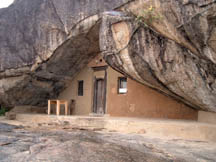|
observer |
|
|
|
|
|
OTHER LINKS |

|

|

|
|
|
|
|
Bandara explained that the archaeological officials believe these
artifacts belong to the prehistoric era, that is, 1,250,000 years ago.
"We found some handprints from this temple complex; this is the first
time such prints had been found in Sri Lanka", he said. The prints are
in red, yellow and ash.
"They might have used yellow, red, ochre and ash", added Bandara. They had also found some ruins of an iron factory. "We are proud to say that we were the first to reveal this to the country, apart from the 'Sellipiya', the paper published by the Ministry of Cultural Affairs and distributed among its employees".
Stupas at Magul Maha Viharaya

The main stupa is built on a stage which is 17m in height and 16m in width. Bricks and stones had been the raw material for the stage while the steps are made of stone pillars. This stupa has how been restored and built in the bubble shape known as 'Bubbulakara'. The diameter of the stupa is around eight metres.
The ruins of two more stupas have been located on top of a mountain. According to Bandara, there is a special reason for building stupas on mountains. Our ancestors had wanted to build stupas at locations which can be viewed from the sea. They may have wanted to give the message to the people travelling in ships, that this a Buddhist country.
Rock cave complex
|
|
There had been around 25 caves at the site, that had been used by monks. The interior of the cave had been separated by walls into rooms, such as living room, bedroom, kitchen and toilet. Near most of the caves is a stone inscription, stating the donor or the resident of the cave. Some of the caves are still used by people of the area; e.g. the watchman of the temple lives in one.
The old tank
At the entrance to the temple, there is a small tank, which enhances the beauty of the temple. This had been built as two separate parts on either side of the entrance. "The ruins of the old dam still remain in the Eastern part of the tank", Bandara said.
Image house
A rock cave in the site had been turned into an image house. The original rock cave is 16m long, but the image house is just nine metres in length. There is a 6.3 metre long reclining Buddha statue. Now, this statue and paintings have been renovated and have been given a new look.












